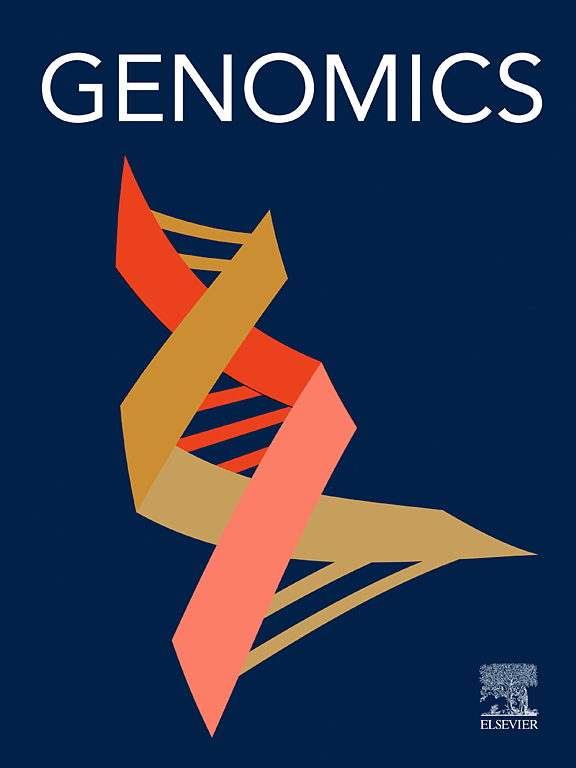Integrating multi-omics analysis unveils the key mechanisms of PQS-enhanced Algicidal activity in Enterobacter hormaechei F2
IF 3
2区 生物学
Q2 BIOTECHNOLOGY & APPLIED MICROBIOLOGY
引用次数: 0
Abstract
Quorum sensing, as a pivotal bacterial signaling pathway, exhibits substantial potential for regulating algicidal activity. This study pioneers the integration of multi-omics analyses (transcriptomics, proteomics, metabolomics) with phenotypic profiling to systematically unravel the molecular mechanisms underlying Pseudomonas Quinolone Signal (2-heptyl-3-hydroxy-4(1H)-quinolinone, PQS)-enhanced algicidal activity in Enterobacter hormaechei F2. Co-cultivation with PQS triggered marked reductions in algal biomass and chlorophyll-a levels, outperforming traditional approaches. Fourier-transform infrared spectroscopy (FTIR) revealed PQS-induced metabolic disruption and membrane degradation in algal cells. Transcriptomic profiling identified novel regulatory hubs, including upregulated glycolysis (tktA, transketolase), fatty acid degradation (fadE, acyl-CoA dehydrogenase), and chemotaxis (malE, maltose-binding protein) pathways. Proteomics confirmed PQS-driven enrichment of terpenoid precursors, notably DXS synthase (1-deoxy-D-xylulose-5-phosphate synthase), and quorum sensing effectors. Metabolomics highlighted amino acid derivatives (e.g., L-glutamate) and heterocyclic antibiotics as dominant algicidal metabolites. Crucially, multi-omics integration delineated a core network of 46 key nodes (e.g., ribose transporter rbsB, L-glutamate) coordinating energy metabolism, motility, and algicide synthesis. Fatty acid degradation enzymes (e.g., FadE) and flagellar assembly regulators (e.g., FlgK) emerged as previously unrecognized targets, with PQS significantly enhancing bacterial swarming motility (p < 0.01) and biofilm formation. These findings establish the first mechanistic framework linking PQS signaling to algicidal process, demonstrating its role in synchronizing metabolic flux toward terpenoid synthesis while optimizing bacterial-algal interactions. Key pathways—including chemotaxis (malE) and terpenoid biosynthesis (DXS synthase)—provide actionable targets for engineering bioaugmented consortia or precision algicidal formulations. This work advances quorum sensing-driven strategies for sustainable harmful algal bloom (HAB) mitigation, offering scalable solutions for aquaculture and eutrophic water remediation with minimal ecological disruption. By bridging molecular mechanisms to field applications, the study underscores the translational potential of this approach in global water security initiatives.

整合多组学分析揭示了pqs增强霍马契肠杆菌F2杀藻活性的关键机制。
群体感应作为一种关键的细菌信号通路,在调节杀藻活性方面显示出巨大的潜力。本研究率先将多组学分析(转录组学、蛋白质组学、代谢组学)与表型分析相结合,系统地揭示了喹诺酮假单胞菌信号(2-庚基-3-羟基-4(1H)-喹诺酮,PQS)增强hormaechei肠杆菌F2杀藻活性的分子机制。与PQS共同培养可显著降低藻类生物量和叶绿素-a水平,优于传统方法。傅里叶变换红外光谱(FTIR)揭示了pqs诱导的藻类细胞代谢破坏和膜降解。转录组学分析鉴定出新的调控枢纽,包括糖酵解(tktA,转酮醇酶)、脂肪酸降解(fadE,酰基辅酶a脱氢酶)和趋化(malE,麦芽糖结合蛋白)途径的上调。蛋白质组学证实了pqs驱动的萜类前体富集,特别是DXS合成酶(1-脱氧-d -木醛糖-5-磷酸合成酶)和群体感应效应物。代谢组学强调氨基酸衍生物(如l -谷氨酸)和杂环抗生素是主要的杀藻代谢产物。至关重要的是,多组学整合描绘了46个关键节点(如核糖转运体rbsB、l -谷氨酸)协调能量代谢、运动和杀藻剂合成的核心网络。脂肪酸降解酶(例如,FadE)和鞭毛组装调节因子(例如,FlgK)作为以前未被识别的靶标出现,PQS显著增强了细菌的群体运动(p
本文章由计算机程序翻译,如有差异,请以英文原文为准。
求助全文
约1分钟内获得全文
求助全文
来源期刊

Genomics
生物-生物工程与应用微生物
CiteScore
9.60
自引率
2.30%
发文量
260
审稿时长
60 days
期刊介绍:
Genomics is a forum for describing the development of genome-scale technologies and their application to all areas of biological investigation.
As a journal that has evolved with the field that carries its name, Genomics focuses on the development and application of cutting-edge methods, addressing fundamental questions with potential interest to a wide audience. Our aim is to publish the highest quality research and to provide authors with rapid, fair and accurate review and publication of manuscripts falling within our scope.
 求助内容:
求助内容: 应助结果提醒方式:
应助结果提醒方式:


